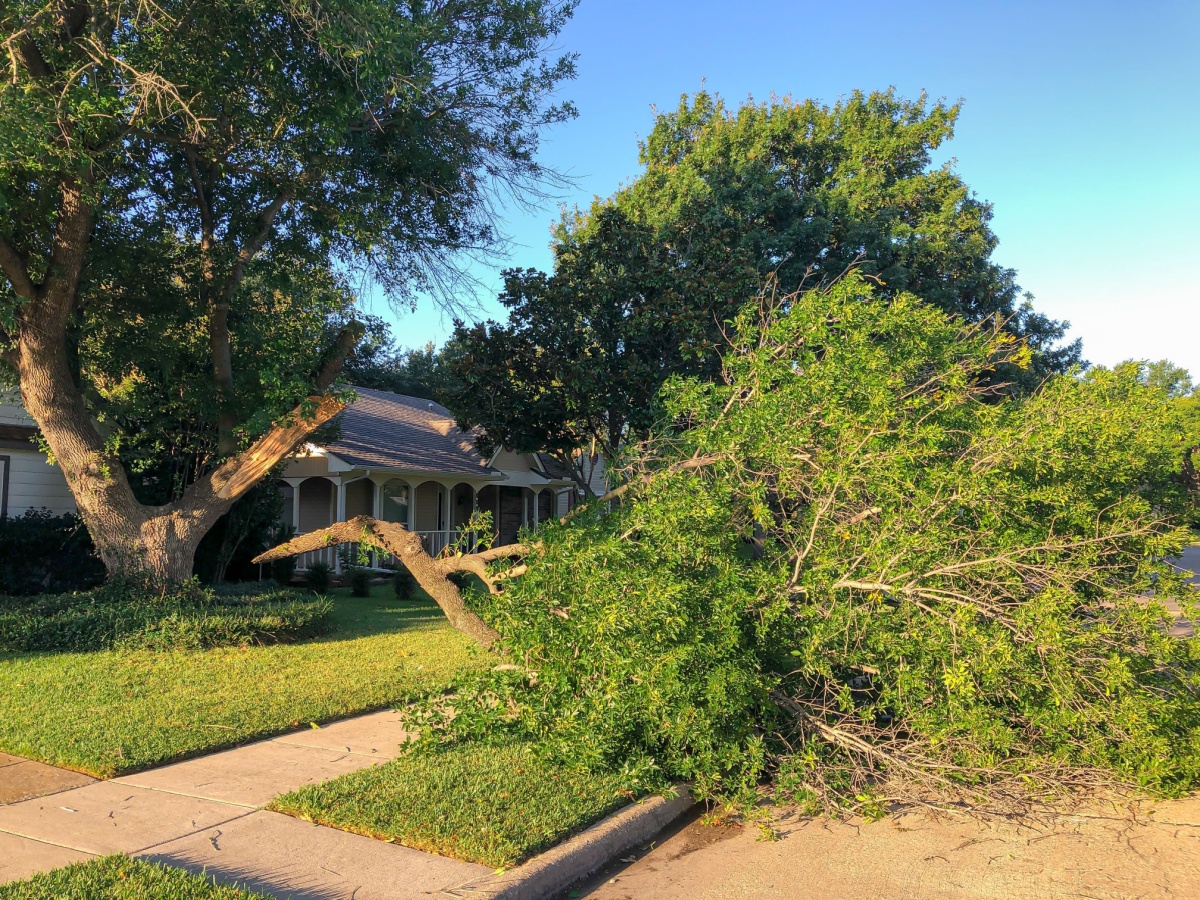
When a powerful storm rolls through town, it can leave behind a trail of destruction, and your trees are often among the most vulnerable victims. Heavy winds, torrential rain, lightning, and even hail can cause limbs to break, bark to split, or entire trees to uproot. Even minor injuries to a tree can lead to long-term health issues and hazardous conditions if left untreated.
Fortunately, many trees can be restored to health with proper care and timely intervention. By having your tree evaluated by a certified arborist as soon as the storm has passed, you can prevent future heartache and avoid potentially dangerous situations. Let’s explore how you can save your storm-damaged tree and protect your landscape from future storms.
Can Your Tree Be Saved?
Before dismissing your tree as a lost cause, take the time to evaluate a few factors. Depending on the extent of damage, the tree’s overall health, and its structural integrity, saving the tree after a storm just may be possible.
Here are a few signs your tree could be salvageable:
- Less than 30% of the crown is damaged: If the majority of the canopy is still intact, there’s a good chance the tree can recover over time.
- Major limbs are still in place: Losing a few small or medium branches isn’t necessarily fatal. If the central leader or main limbs are still secure, the tree can usually bounce back.
- No significant trunk wounds: Deep cracks, splits, or missing bark can compromise a tree’s ability to transport nutrients. If these are minimal, the tree may survive.
- The root system is stable: Trees that remain upright and show no signs of heaving soil or exposed roots typically have a better chance of recovery.
However, if the trunk is split down the middle, more than half the canopy is gone, or the tree is leaning dangerously, it may be time to consider tree removal. These situations create ongoing hazards and structural weaknesses that cannot be reliably repaired.
An ISA-certified arborist can assess the severity of the damage and help you determine the safest and most effective course of action.
Caring for a Storm-Damaged Tree
If your tree can be saved, it will need immediate and thoughtful care to prevent further injury, disease, or decline. Three of the most effective recovery methods include pruning, cabling, and bracing.
Pruning a Storm-Damaged Tree
The first step in saving a storm-damaged tree is removing any broken, hanging, or splintered limbs. Leaving these damaged branches attached can increase the risk of further injury or attract pests and diseases. Getting rid of the problematic limbs, in contrast, reduces weight stress and encourages healthy regrowth.
Since over-pruning can shock the tree and reduce its ability to photosynthesize, a professional arborist will carefully prune to the nearest healthy branch collar to ensure proper healing and limit stress.
Cabling a Storm-Damaged Tree
In cases where a tree has multiple large limbs or co-dominant stems that have been weakened by a storm, cabling may be used to provide added support. This involves installing flexible steel cables high in the tree canopy to limit movement during windstorms and relieve stress on compromised branches. Thanks to its incredible strength, cabling can extend the life of a tree by preventing limbs from splitting or falling.
Bracing a Storm-Damaged Tree
Bracing is often used in conjunction with cabling and involves the installation of rigid rods through split limbs or trunks to hold them together. This technique can help repair cracks and splits that threaten the structural integrity of the tree.
Remember, both cabling and bracing must be installed by a trained arborist, as incorrect installation can cause more harm than good.
Tips for Preventing Future Storm Damage to Your Tree
While we can’t control the weather, there are steps you can take to reduce the risk of storm damage to your trees in the future. Consider these tree care practices:
- Schedule Routine Tree Inspections: Regular health assessments from a certified arborist allow you to catch signs of decay, disease, or structural weakness before the next storm hits.
- Prune Regularly: Preventative pruning helps manage canopy weight and shape, reducing the risk of broken branches during storms.
- Remove Dead or Dying Limbs: Dead wood is brittle and breaks easily under pressure. Prompt removal keeps your tree healthy and reduces hazards.
- Install Support Systems: For trees with known weaknesses or heavy canopies, preemptive cabling and bracing can help prevent storm-related breakage.
- Choose Wind-Resistant Species: If planting new trees, select species known for their durability and deep root systems.
- Maintain Soil Health: Healthy soil provides strong root support. Avoid compacting the soil and use proper watering techniques. Most importantly, schedule routine deep-root fertilization with our team at All About Trees to make sure your beloved tree has everything it needs to bounce back from storm-related injuries quickly.
Save Your Storm-Damaged Tree With Help From All About Trees
If you’re dealing with the aftermath of a storm, you don’t have to navigate it alone. Our ISA-certified arborists will assess the condition of your tree, explain your options, and provide the services needed to restore it to health or remove it safely if necessary. With the right approach and timely intervention, saving a storm-damaged tree is not only possible but often the best decision for your property and peace of mind.
Don’t wait until a damaged tree becomes a danger. Contact All About Trees today to schedule a tree health inspection. If needed, we can also provide after-storm cleanup services to preserve the health of the rest of your property.
